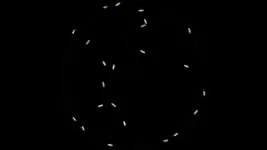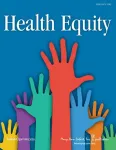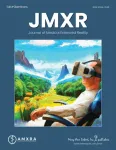(Press-News.org) ITHACA, N.Y.- Though human-made ponds both sequester and release greenhouse gases, when added up, they may be net emitters, according to two related studies by Cornell University researchers.
The studies begin to quantify the significant effects that both human-made and natural ponds have on the global greenhouse gas budget, measurements that aren’t well understood.
“Global climate models and predictions rely on accurate accounting of greenhouse gas emissions and carbon storage,” said Meredith Holgerson, assistant professor of ecology and evolutionary biology at Cornell and senior author of the studies. Nicholas Ray, a postdoctoral researcher in Holgerson’s lab, is a co-author of both papers.
Holgerson and colleagues have previously estimated that ponds – defined as 5 hectares (12 acres) or less and of which there could be 1 billion on Earth – may contribute 5% of the global methane emissions to the atmosphere. But without accurate measurements across many water bodies, the true number could be as little as half or as much as twice that percentage. At the same time, very few estimates of carbon burial rates in ponds exist.
One paper, “High Rates of Carbon Burial Linked to Autochthonous Production in Artificial Ponds,” published Aug. 18 in the journal Limnology and Oceanography Letters, examines how much carbon is sequestered in 22 Cornell Experimental Ponds. The identical ponds – there are 50 – constructed in 1964, provided highly controlled environments, with detailed records from previous studies. The data allowed Holgerson and Ray to evaluate how management activities contributed to carbon storage.
In the study, the researchers examined the past management activities, while also taking sediment cores and measurements of sediment thickness for each of the 22 study ponds. They measured the amount of carbon in the sediment, extrapolated those measurements to the overall pond, and divided that number by the age of the pond to arrive at the amount of carbon sequestered annually per square meter, a number on the same order of magnitude as wetlands and mangroves, and more than lakes.
They also found that carbon burial rates were influenced by aquatic plants (those large enough to be seen), fish and additions of high nitrogen levels relative to phosphorus, nutrients that may not get renewed in a static pond and become limited. The right kinds and ratios of added nutrients promote plant growth, which use carbon for cells, and are deposited on the pond floor when plants die.
Though data of organic carbon sequestration in natural ponds is lacking, the researchers extrapolated their findings to estimate the total carbon burial rate in natural and artificial ponds globally. They concluded that natural and artificial ponds sequester 65% to 87% of the total amount estimated to be stored by all lakes, which indicated that scientists are globally underestimating carbon sequestration in ponds and lakes.
The second study, “High Intra-Seasonal Variability in Greenhouse Gas Emissions From Temperate Constructed Ponds,” published Sept. 19 in the journal Geophysical Research Letters, examined seasonal emissions of greenhouse gases (mainly carbon dioxide and methane) from four of the Cornell Experimental Ponds.
In the study, the researchers measured gas emissions from the ponds approximately every two weeks over the course of ice-free period in 2021.
“Global estimates of greenhouse gas budgets from ponds are highly uncertain, in part due to lack of temporal measurements,” said Ray, who is lead author of the study. The researchers found that methane – a greenhouse gas 25 times more potent than carbon dioxide – accounted for most of the gas emitted annually, and carbon dioxide and methane emissions varied greatly by season.
Ponds absorbed carbon dioxide during early summer months when plants were growing, and emitted it later in the year, when plants decomposed. Methane was emitted throughout warm months, but week-to-week shifts in emissions were high, pointing to the need for frequent sampling for accurate accounting.
The researchers found that when water was stratified (a layer of warm water sitting on top of cold bottom waters), methane built up and led to overall higher emissions than when water was mixed by wind or sudden cooling. That’s because micro-organisms on the pond bed that produce methane require low-oxygen conditions that is disrupted by mixing.
When the results from the two papers are considered together, ponds are net emitters of greenhouse gases, due to methane release overwhelming the amount of carbon stored in the sediments. But the findings also offer the possibility of reducing methane emissions with bubblers or underwater circulators.
“If we could reduce that methane number, we could potentially flip these ponds from being net emitters to net sinks, but we have to get a handle on that methane,” Holgerson said.
The research was funded by the New York State Water Resources Institute.
END
Ponds release more greenhouse gas than they store
2023-09-19
ELSE PRESS RELEASES FROM THIS DATE:
Researchers identify neurons that guide flies upwind
2023-09-19
New research by Janelia scientists and collaborators at the University of North Carolina at Chapel Hill shows how a cluster of neurons in the fruit fly brain transforms memories about past rewards into actions, helping the fly navigate to find food.
Like other insects, flies turn into the wind, or upwind, to locate the source of attractive odors. The fly’s olfactory system detects and senses odors carried by the wind, guiding the fly to the reward.
In the fly, a brain region called the mushroom body processes and integrates olfactory information. Multiple compartments ...
How stakeholders are working to advance health equity
2023-09-19
New Rochelle, NY, September 19, 2023–A special issue of the peer-reviewed journal Health Equity titled “How Stakeholders Are Working to Advance Health Equity" covers the following areas: changing mindsets, promoting antiracism in health delivery systems, and promoting antiracism in health policy. Click here to read the issue now.
Guest Editors of the special issue are Laurie Zephyrin, MD, MPH, MBA, Senior Vice President, Advancing Health Equity, The Commonwealth Fund; Claire-Cecile Pierre, MD, Associate Chief Medical Officer, Vice President of Community Health, ...
Recent advances in bread research
2023-09-19
Whether light and fluffy or thin and flexible, bread holds an important place in many cultures and cuisines. And despite millennia of baking experience, scientists are still striving to improve this staple food. Below are some recent papers published in ACS journals that report insights into the quality, healthfulness and preparation of bread. Reporters can request free access to these papers by emailing newsroom@acs.org.
“Unraveling the Influence of Wheat Bran Chemical Composition, Lipolytic Enzyme Activities, and Phenolic Components on the Bread-Making Properties of Reconstituted Whole Wheat Flours”
ACS Food Science & Technology
Sept. 13, 2023
Whole-wheat bread contains ...
Expanding the VR immersion comfort zone
2023-09-19
Near-eye displays are emerging as the future of portable devices, providing individuals with immersive virtual reality experiences. The primary objectives in developing these displays are to create immersive experiences and ensure visual comfort. While a larger field of view (FOV) enhances immersion in virtual reality, addressing the Vergence-Accommodation-Conflict (VAC) is crucial for comfortable vision. Researchers have explored innovative approaches to tackle these challenges. A significant breakthrough in near-eye displays is the integration of light field technology. However, earlier light field displays in VR were limited by their ...
UNC Gillings School to host new CDC center for outbreak forecasting, response
2023-09-19
Today, the UNC Gillings School of Global Public Health was named one of 13 funded partners working alongside the Centers for Disease Control and Prevention (CDC) to establish the Outbreak Analytics and Disease Modeling Network (OADM) – an important step towards creating a nationwide outbreak resource to support more effective responses during public health emergencies.
Each funded partner will provide support in innovation, integration or implementation for outbreak analytics, disease modeling and forecasting. The Gillings ...
International research effort to weigh “green ammonia” impact on climate change and environment
2023-09-19
The U.S. National Science Foundation, UK Research and Innovation, and Natural Sciences and Engineering Research Council of Canada have jointly funded a new global center to address the emerging opportunity and challenge of “green ammonia” to provide clean energy and support food production while mitigating climate change. The Global Nitrogen Innovation Center for Clean Energy and the Environment (NICCEE), spearheaded by the University of Maryland Center for Environmental Science (UMCES) with key partners in the U.S. (New ...
Predictive model could improve hydrogen station availability
2023-09-19
Consumer confidence in driving hydrogen-fueled vehicles could be improved by having station operators adopt a predictive model that helps them anticipate maintenance needs, according to researchers at the U.S. Department of Energy’s National Renewable Energy Laboratory (NREL) and Colorado State University (CSU).
Stations shutting down for unscheduled maintenance reduces hydrogen fueling availability to consumers and may slow adoption of these types of fuel cell electric vehicles, the researchers noted. The use of what is known as a ...
Brennan Spiegel, MD, MSHS appointed Editor-in-Chief of new open access journal, Journal of Medical Extended Reality
2023-09-19
New Rochelle, NY, September 19, 2023—Mary Ann Liebert, Inc. announces the launch of Journal of Medical Extended Reality (JMXR), the new open access peer-reviewed research journal dedicated to the advancement of extended reality in medicine. JMXR is launching in partnership with the American Medical Extended Reality Association (AMXRA), the premier medical society advancing the science and practice of medical extended reality, as their Official Journal. The journal welcomes your submission and will consider virtual, augmented, and mixed reality research, alongside other emerging technologies.
Spearheaded ...
Training the gut’s immune system to combat detrimental effects of emulsifiers in processed food
2023-09-19
In a new study, mice whose immune systems were trained against the microbial protein flagellin did not experience the usual detrimental effects of ingesting food additive emulsifiers, pointing to a potential new way to combat various chronic inflammatory diseases. Melissa Kordahi and Benoit Chassaing, Inserm researchers from the Institut Cochin and Université Paris Cité, France, and colleagues present these findings September 19th in the open access journal PLOS Biology.
Dietary emulsifiers are substances added to processed food products to prevent mixed ingredients from separating. Prior research has suggested that eating certain emulsifiers ...
RNA for the first time recovered from an extinct species
2023-09-19
A new study shows the isolation and sequencing of more than a century-old RNA molecules from a Tasmanian tiger specimen preserved at room temperature in a museum collection. This resulted in the reconstruction of skin and skeletal muscle transcriptomes from an extinct species for the first time. The researchers note that their findings have relevant implications for international efforts to resurrect extinct species, including both the Tasmanian tiger and the woolly mammoth, as well as for studying pandemic RNA viruses.
The Tasmanian ...





